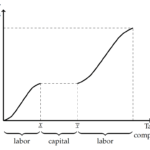Automation technologies have spread rapidly throughout the advanced economies during the last decades. The number of industrial robots per worker in the US economy increased from 0.38 to 1.8 between 1993 and 2017, while the share of information technology in overall US investment rose from 3.5% to 23% between 1950 and 2020. These developments have caused fears of widespread displacement of workers and sparked a debate about the future role of human labour in the economy (e.g. Mokyr et al. 2015).
A growing body of evidence has documented the consequences of automation. Much of this evidence points to its polarising […]
Full Post at cepr.org
